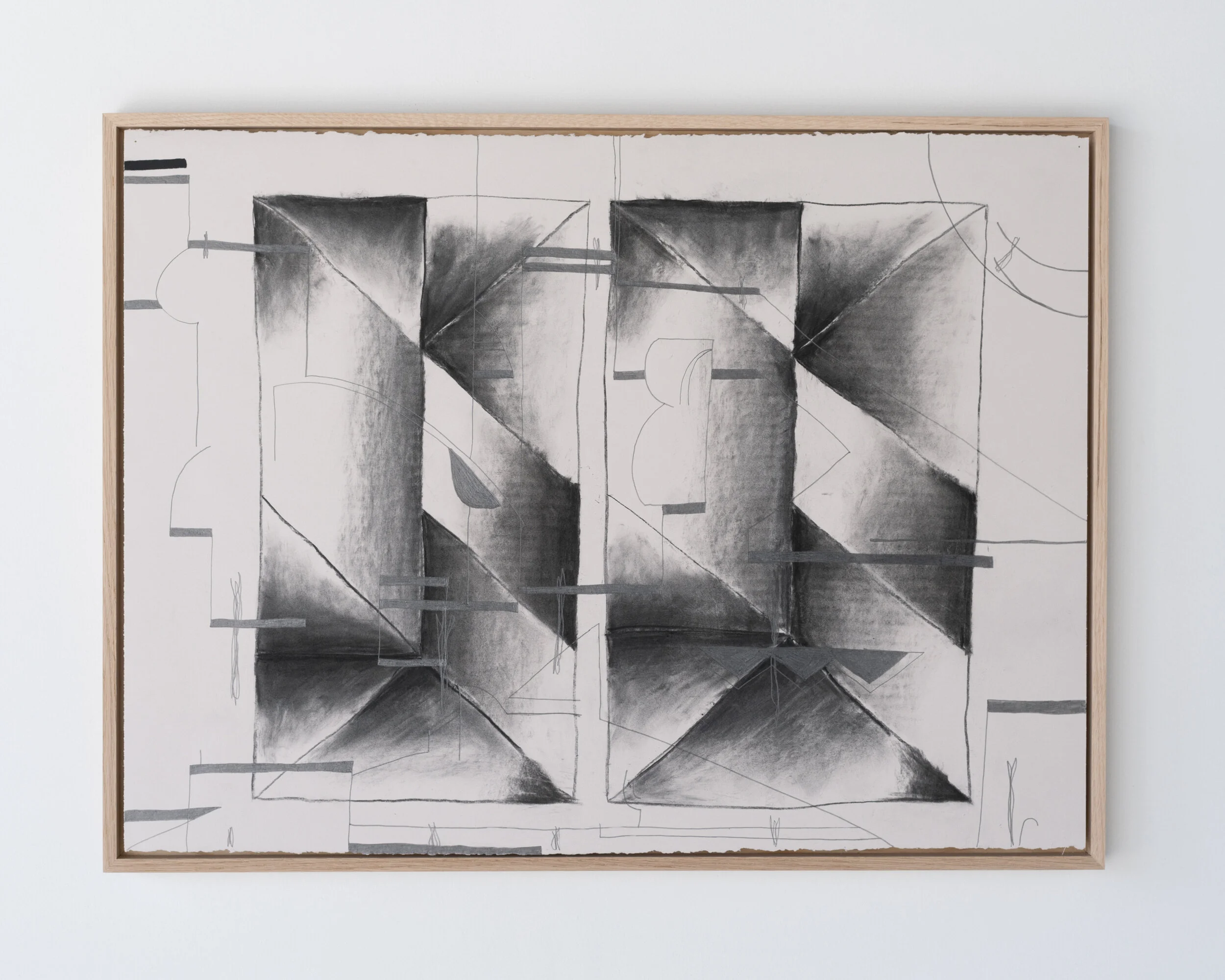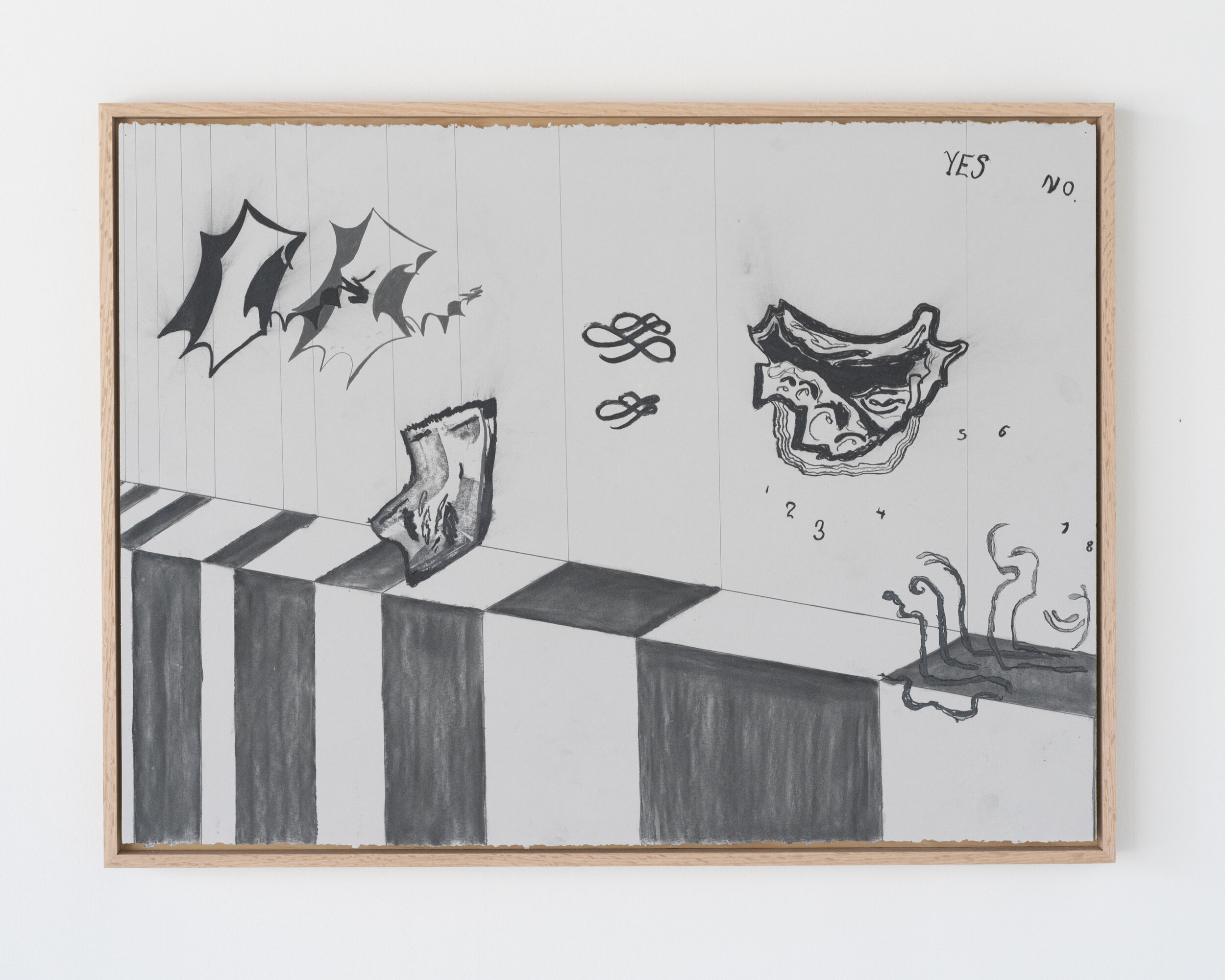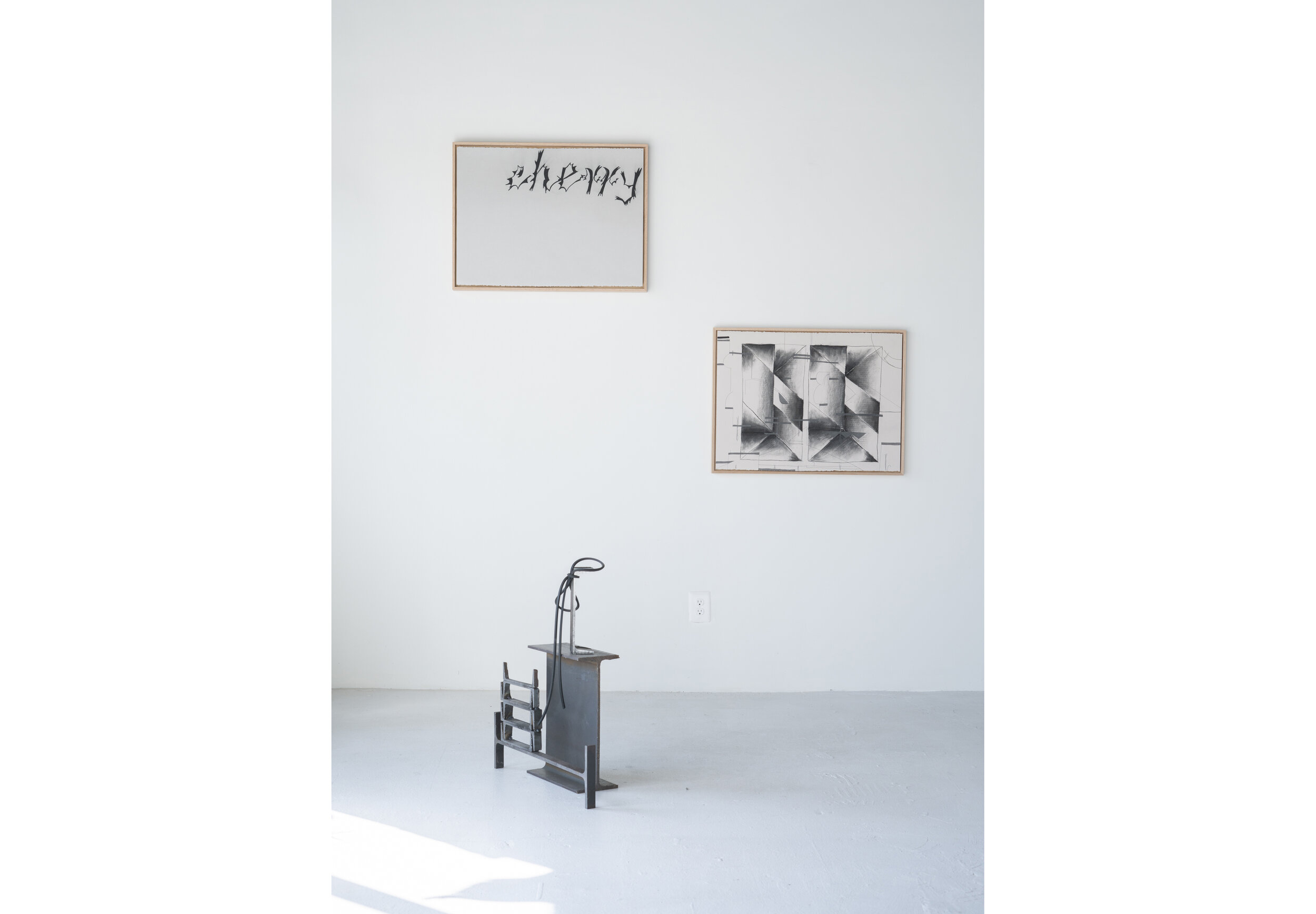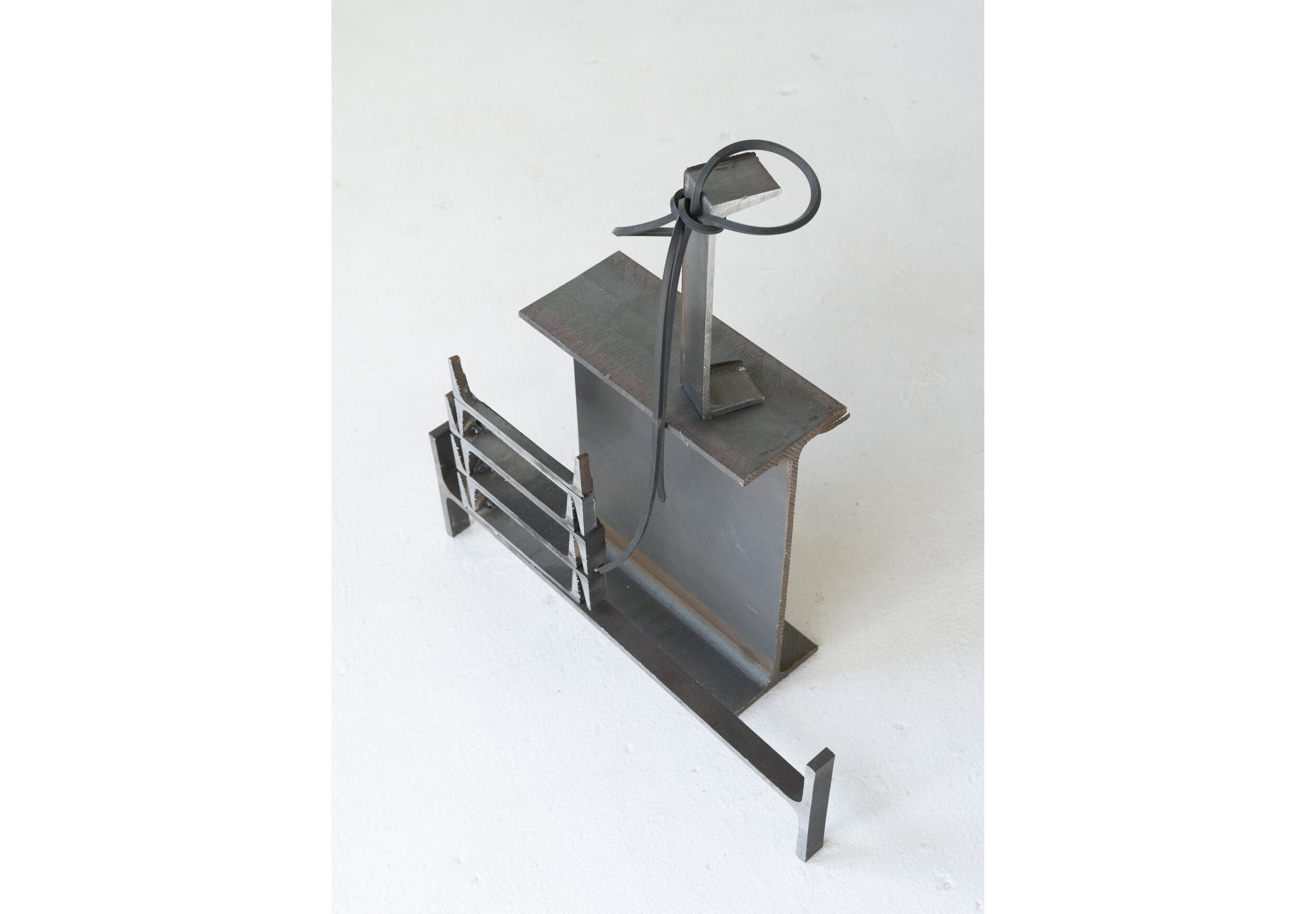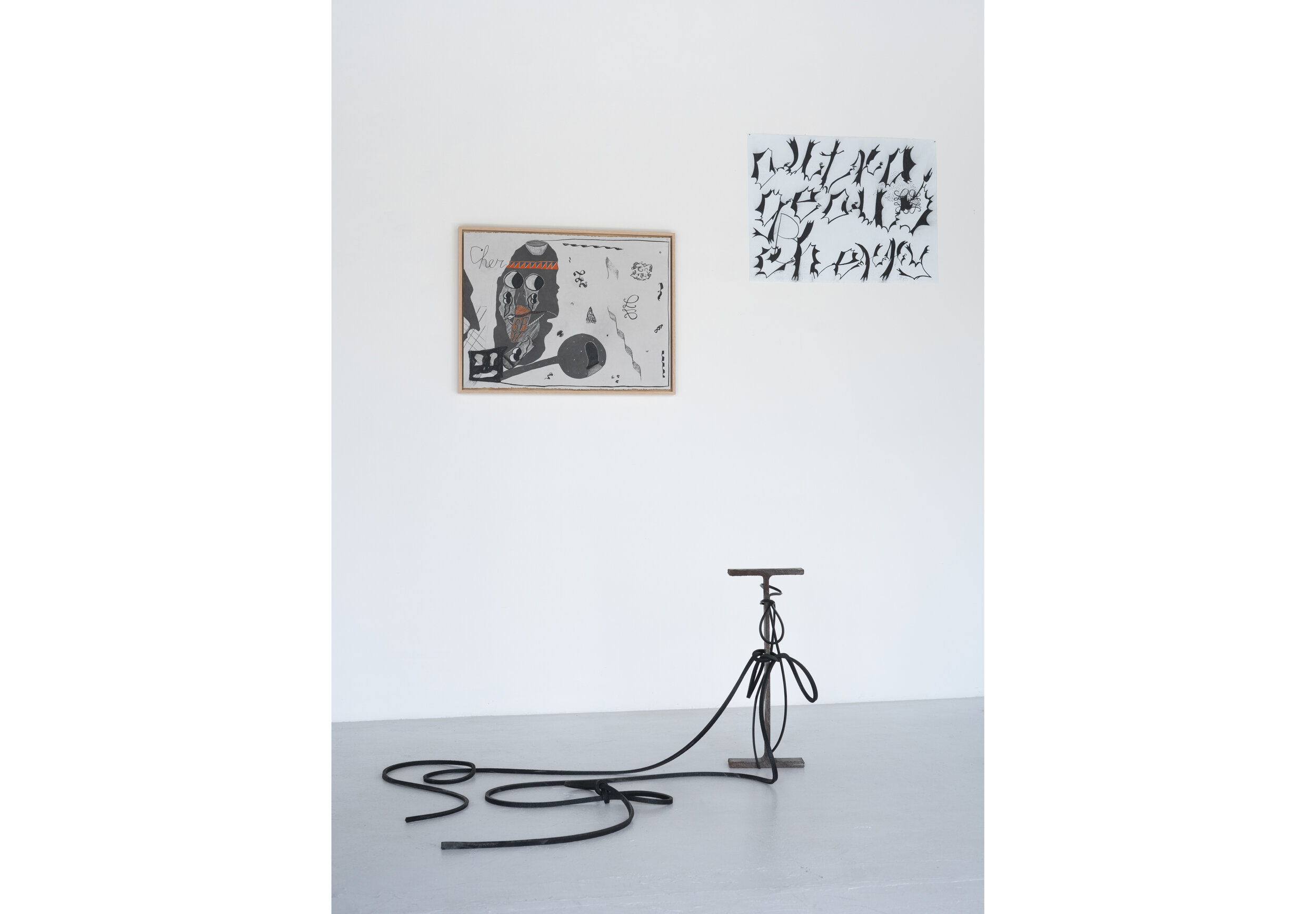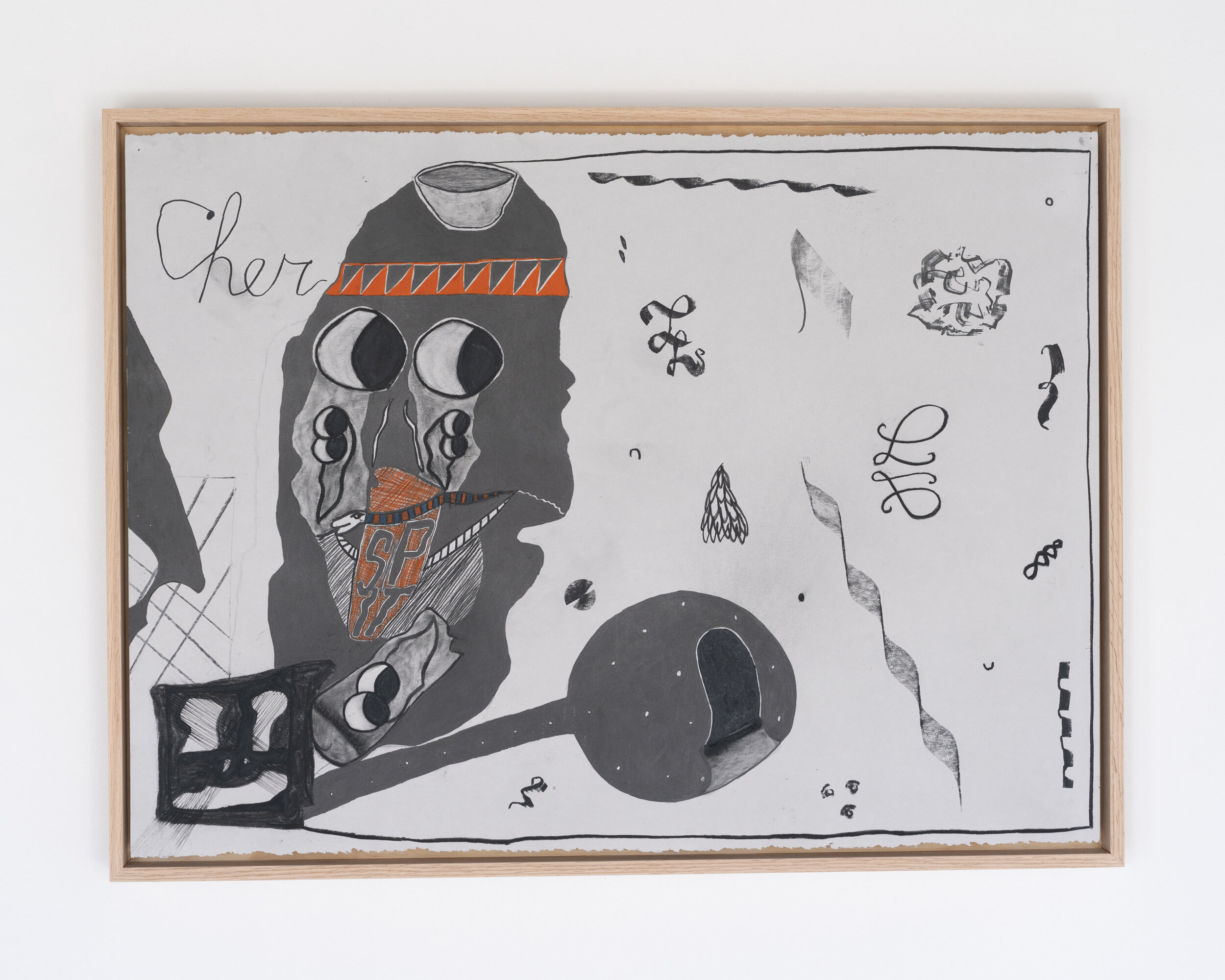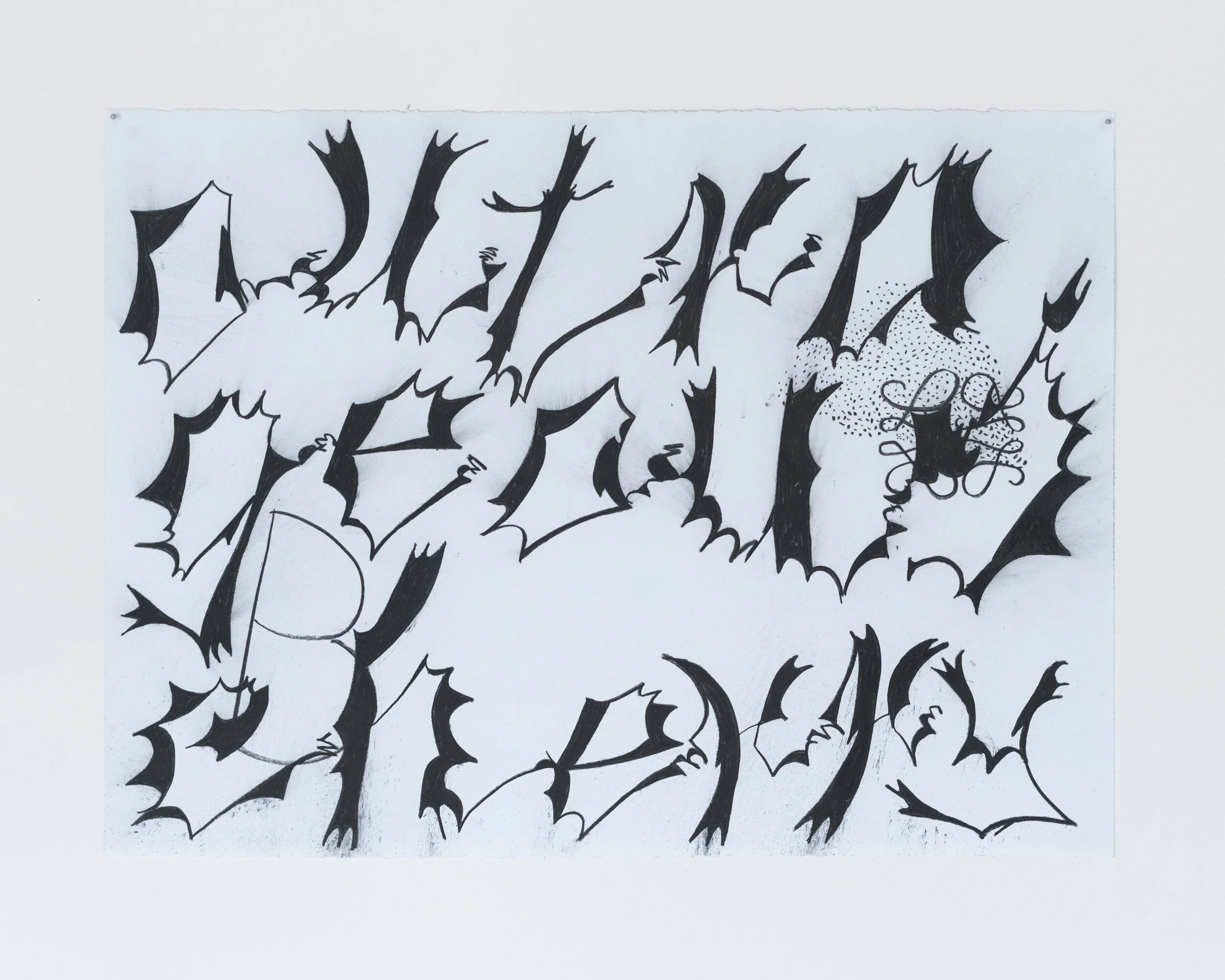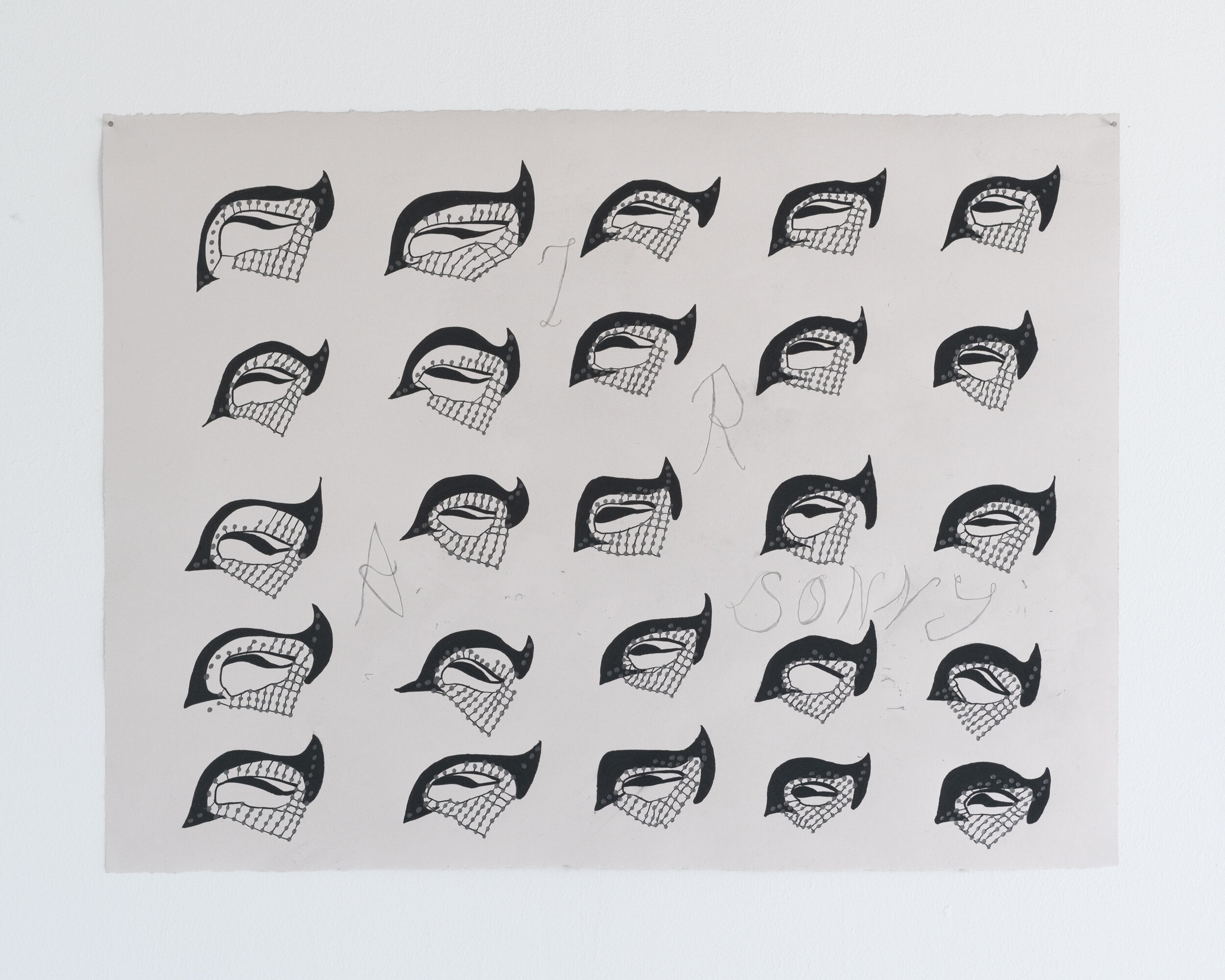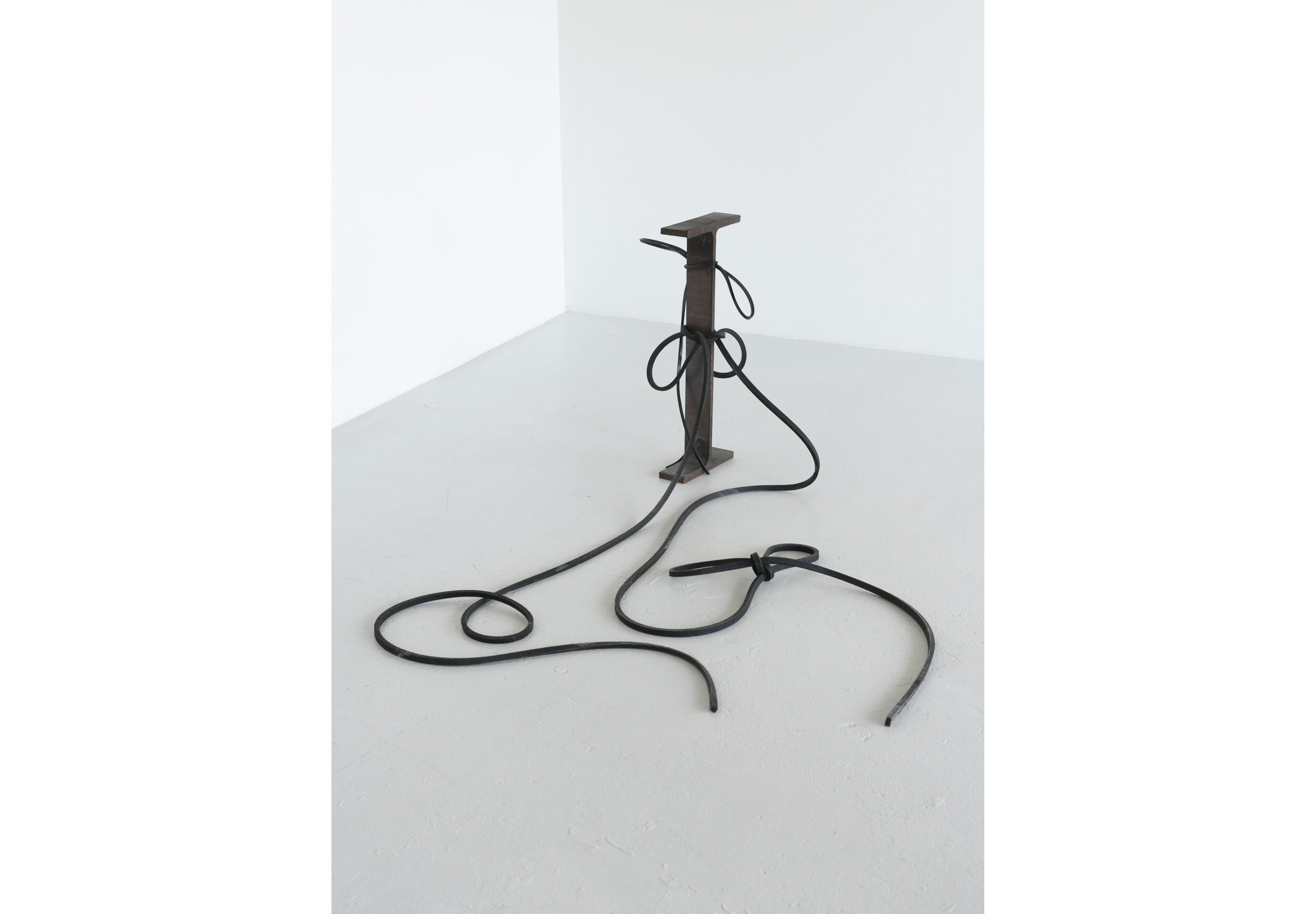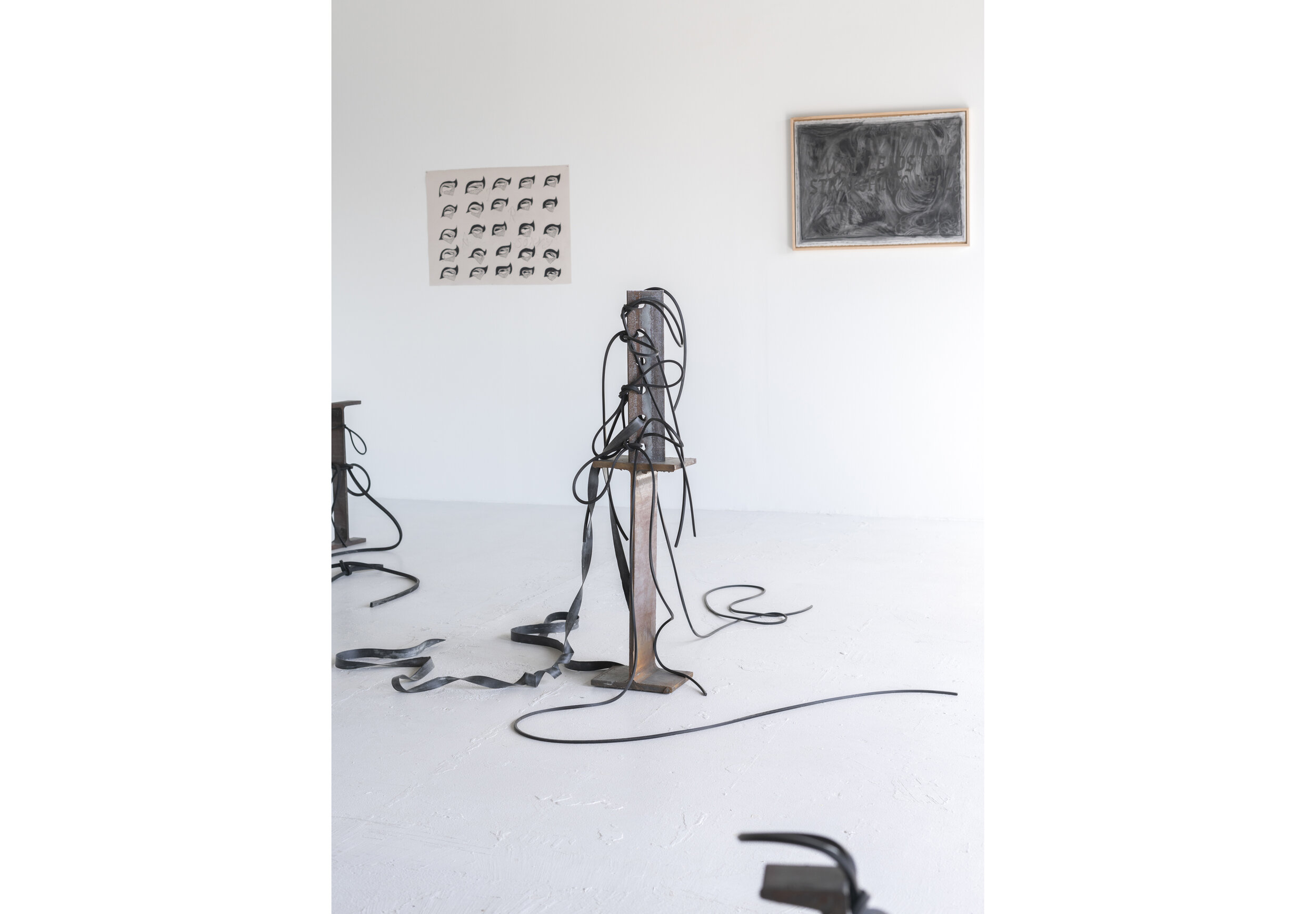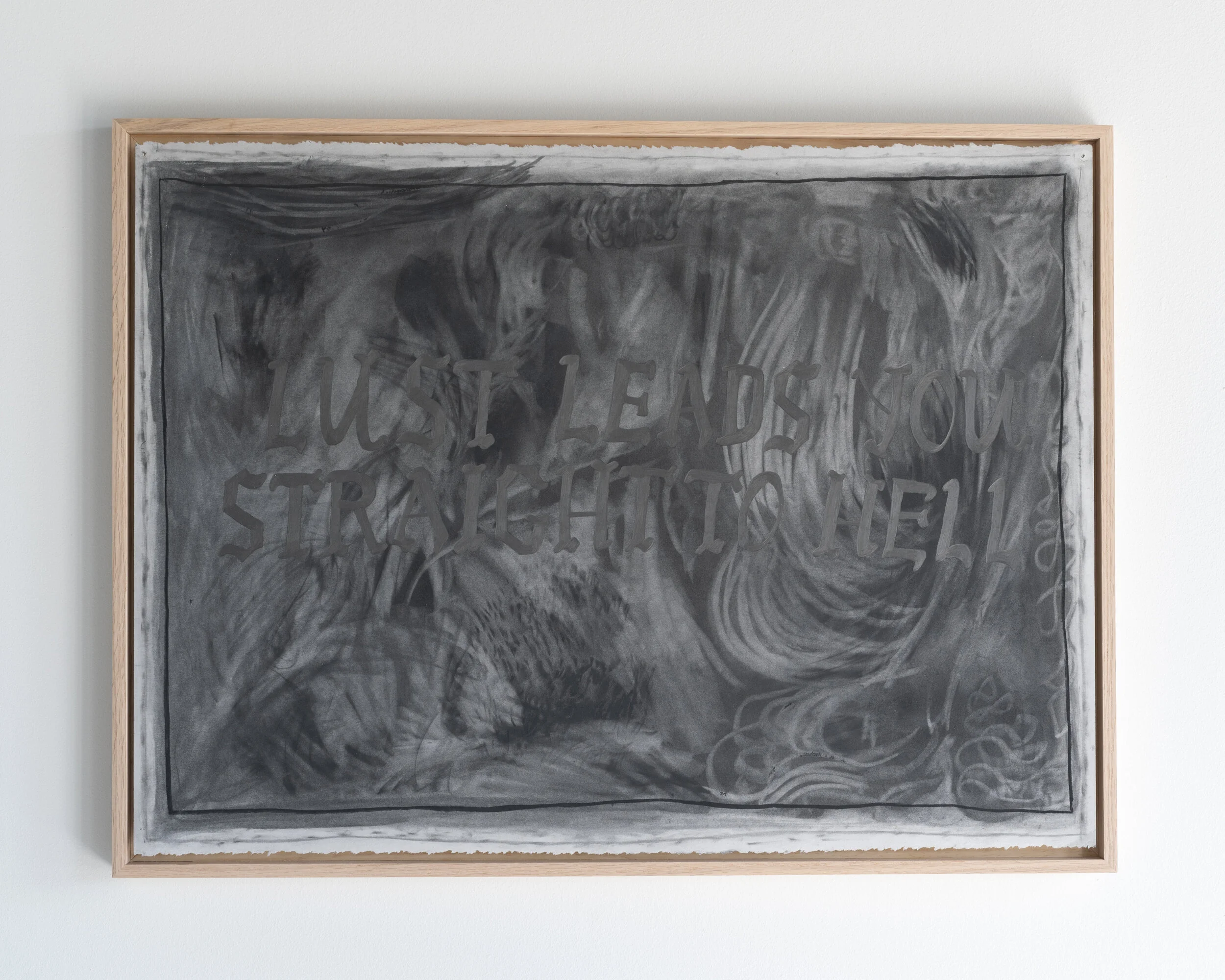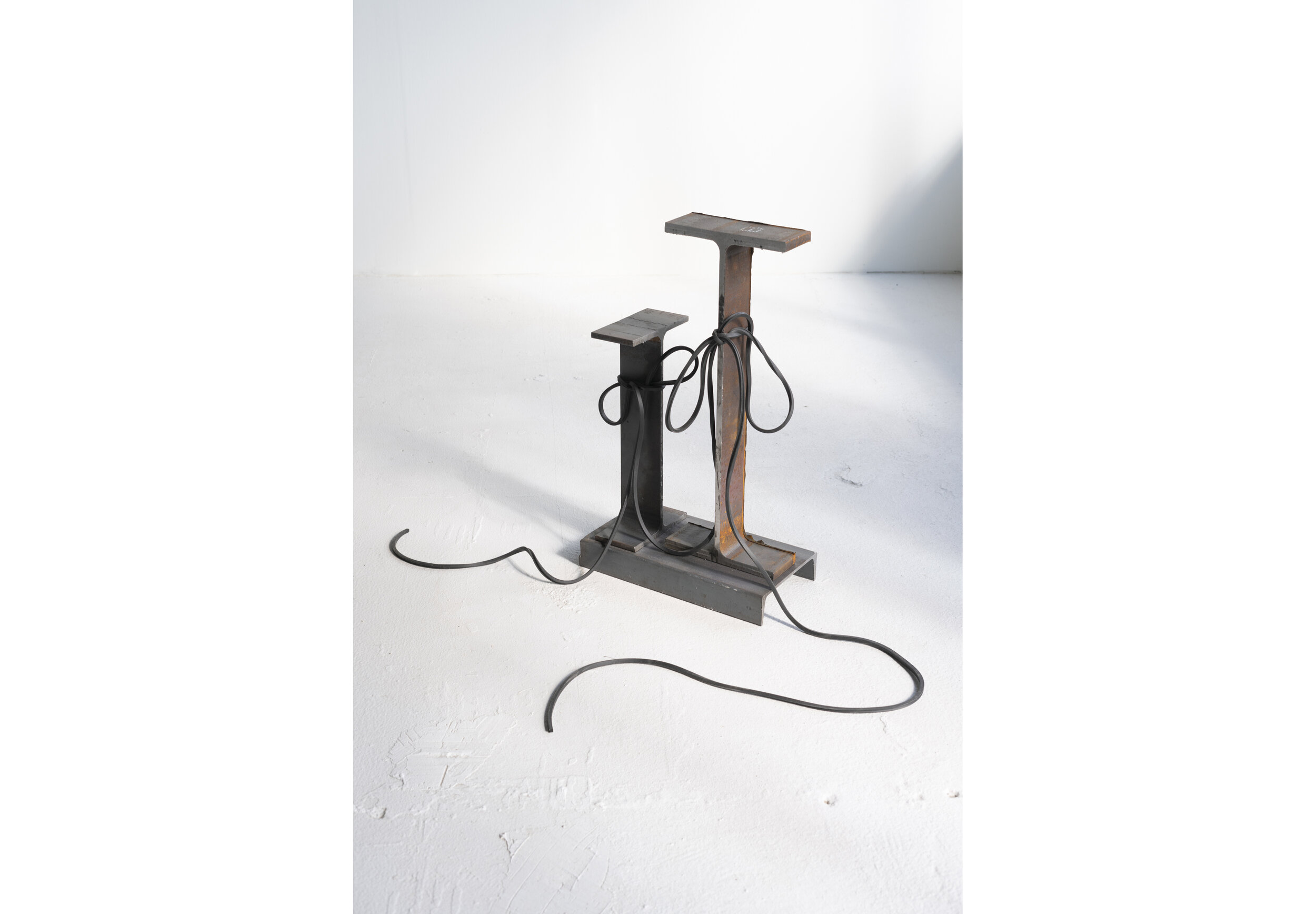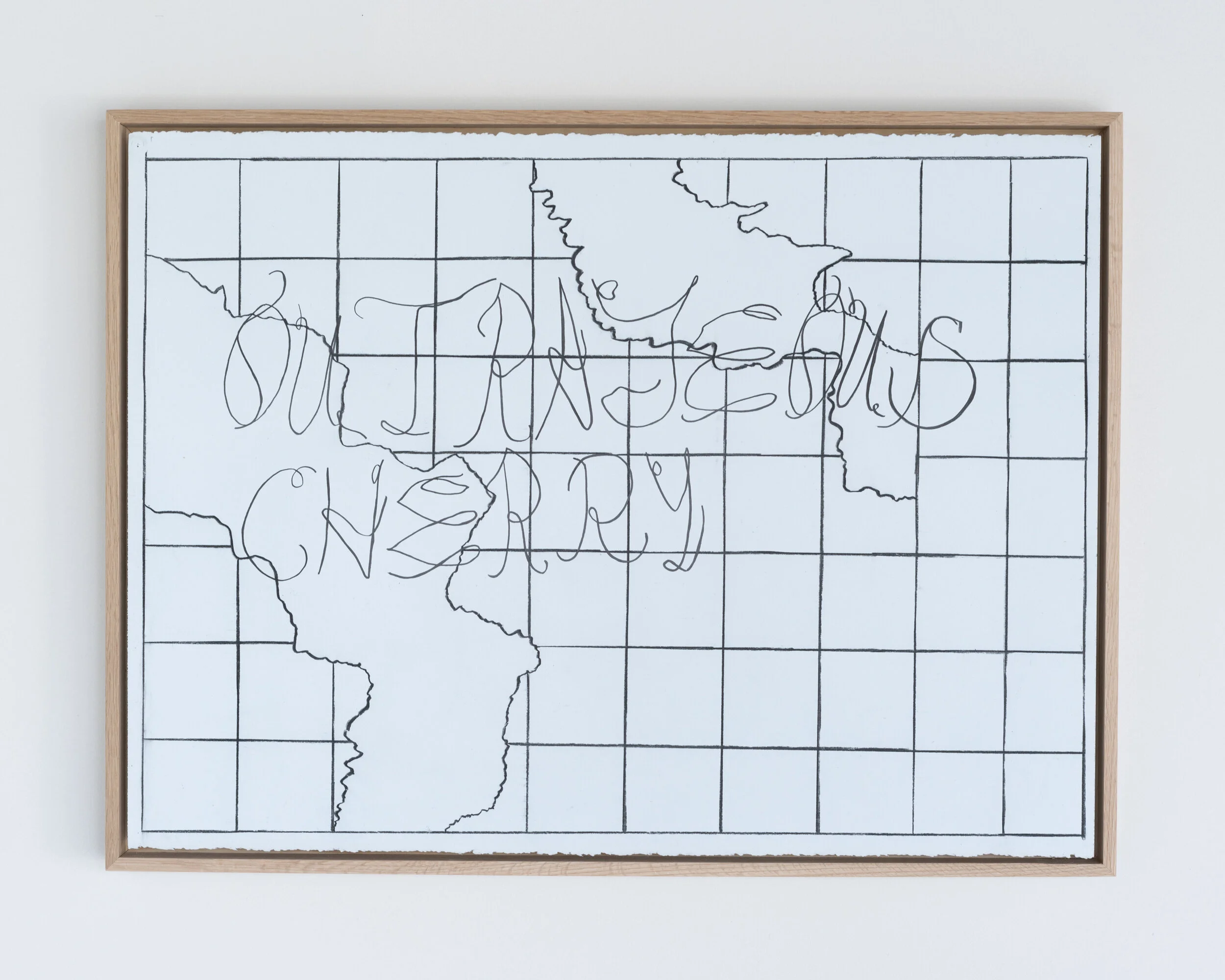Alyse Ronayne
Lust Leads You Straight to Hell
October 8 - November 6, 2021
Hey Nik, It’s me Alyse. I am really excited to have this show in Detroit. As I mentioned earlier, a lot of the drawings reference a queer identity and history. The imagery in His His Also for example is from a black and white photo snapped at a pride parade in the 80s. Most of queer history exists with this sort of ephemera - event photos, night club flyers, not in historical text books (yet). Documentation and narrative of minority history exists thru ephemera and word of mouth in the community. That’s one of the reasons i’m so drawn to Ray Johnson’s drawings, who was also a queer artist from Detroit. He’d make half completed drawings and send them off for another friend to finish. He had a fascination with Sonny and Cher, and other performative celebrities, much like how we see people dress copy Madonna’s or lady Gaga’s outrageous style today. Even tho those women are straight, they’ve become queer icons. Lady Gaga’s 2017 (or 2018) super bowl halftime show performance took place days before trumps swearing in ceremony, and while mike pence was in the stadium attending the game. Her lyrics “no matter gay, straight or bi, lesbian, transgender life, you’re on the right track baby, you were born to survive” were blasted to millions of viewers (not to mention all over contemporary airwaves when it came out seven years prior). Hearing those words on the radio were groundbreaking and liberating for me as a 20something, and felt even more like an anarchist, anti-fascist rally cry in the wake of trumps election. The billboard stating how LUST LEADS YOU STRAIGHT TO HELL was a familiar slogan/ idea growing up in a sizable catholic family from Detroit. I constantly rebelled and got in trouble, and eventually learned to embrace Lust and Hell as unavoidable, even as desirable. Lady Gaga, as we all know, is going straight to hell. That's where the best party of the afterlife will be! The icon of the cherry has similar double-edged connotations: it can represent innocence and it can represent horniness; it's used in casinos, in gambling. Lolita comes to mind. Outrageous Cherry was a Detroit band in the 90s, these are my attempts at making them posters (many bands' histories remain only thru that sort of ephemera and word of mouth). My obsession with typography and seemingly adorned font is related to abstraction (which is inherently female), it's a queered version of representation. You could say that a serif-ed font is a queered, decorative version of a sans-serif font. There are also references to many other female artists in the drawings. Rebecca Morris and Eileen Gray patterns have been over-layed on drawn reproductions of Wilder Alison's paintings and funky text. My personal lexicon of collected shapes and textures reappears in some of the drawings as well (the Compress to Express series). My flight lands at 2:30 FYI.

